Cracks in walls can be more than just a visual concern; they can indicate underlying structural issues that demand attention. In this guide, we delve into the different types of wall cracks and their implications. Understanding these cracked walls is crucial for assessing property conditions and making informed decisions.

Things we covered for you
Whether you’re looking to identify potential structural concerns in your own home or seeking expertise to guide your real estate decisions, this guide will empower you with the tools to navigate the world of wall cracks with confidence. Get ready to unlock the secrets of cracked walls and safeguard your investment.
Different Type of Cracked Walls
There are various types of wall cracks that can occur, each with its own characteristics and potential causes. Here are some common types of wall cracks:
1. Hairline Cracks
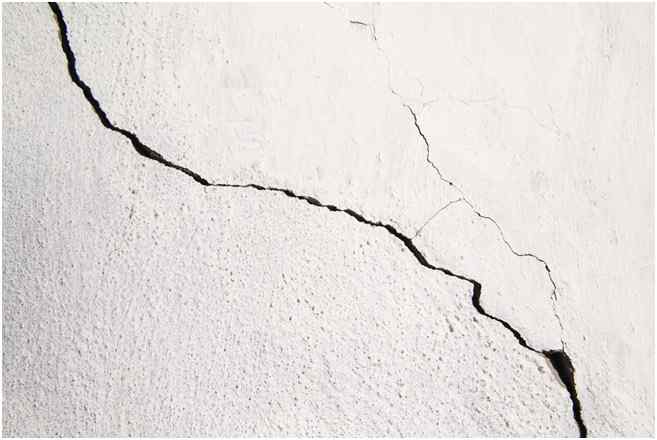
These are very thin cracks, often less than 1/16 inch wide, and are commonly found in most properties. Hairline cracks are usually superficial and are caused by minor settling, natural expansion and contraction of materials, or ageing of the building.
2. Vertical Cracks
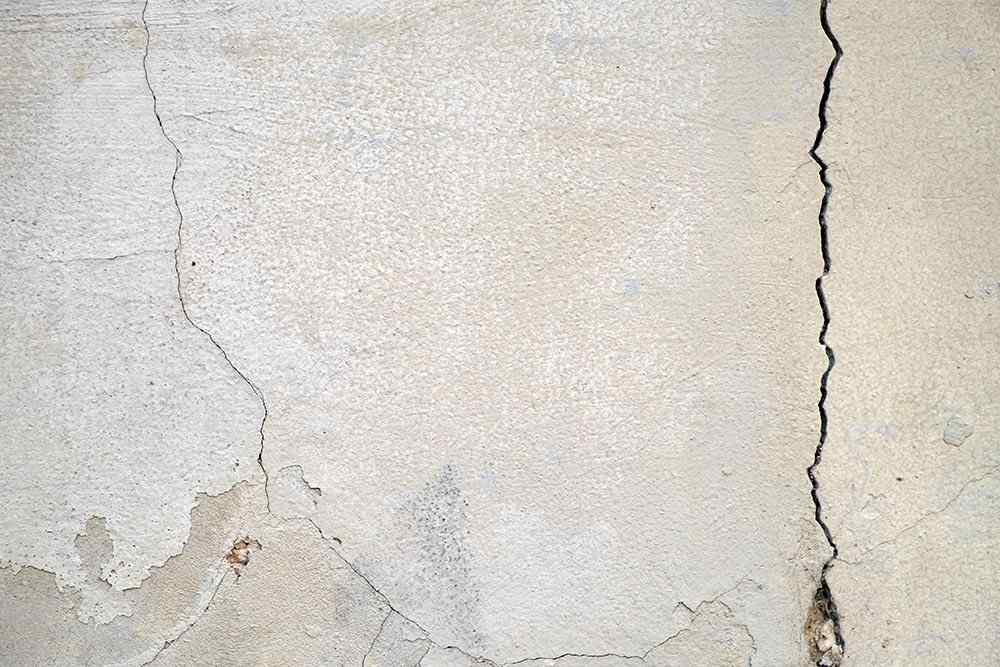
These cracks run straight up and down, typically from floor to ceiling or along the joints of construction materials. Vertical cracks are often caused by normal settling of the building or minor shifts due to temperature or moisture changes. They are commonly seen in drywall and are generally less concerning unless they widen or exhibit other concerning characteristics.
3. Horizontal Cracks

Horizontal cracks run parallel to the ground or follow the lines of structural components. They can be a cause for more significant concern as they may indicate issues with the building’s foundation, excessive soil pressure, or structural movement. Horizontal cracks can pose a risk to the building’s stability and should be evaluated by a professional.
Read: 5 Ways to Keep Your Home Safe from Break-Ins
4. Diagonal Cracks
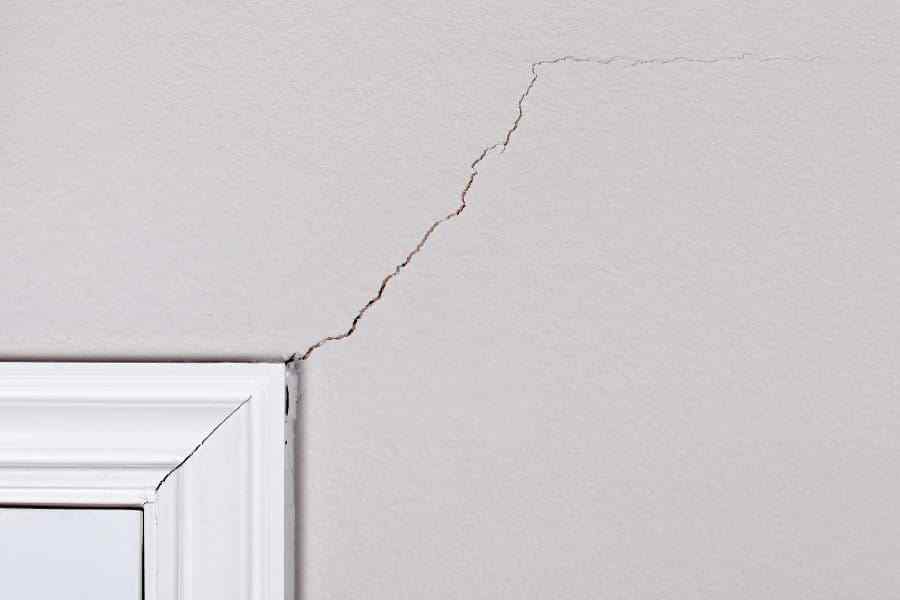
These cracks slant at an angle across the wall, often intersecting other cracks or following the natural lines of construction materials. Diagonal cracks can be caused by foundation settling, structural movement, or stress on the building due to external forces. The angle and pattern of diagonal cracks can provide insights into the underlying cause and severity of the issue.
5. Stair-Step Cracks
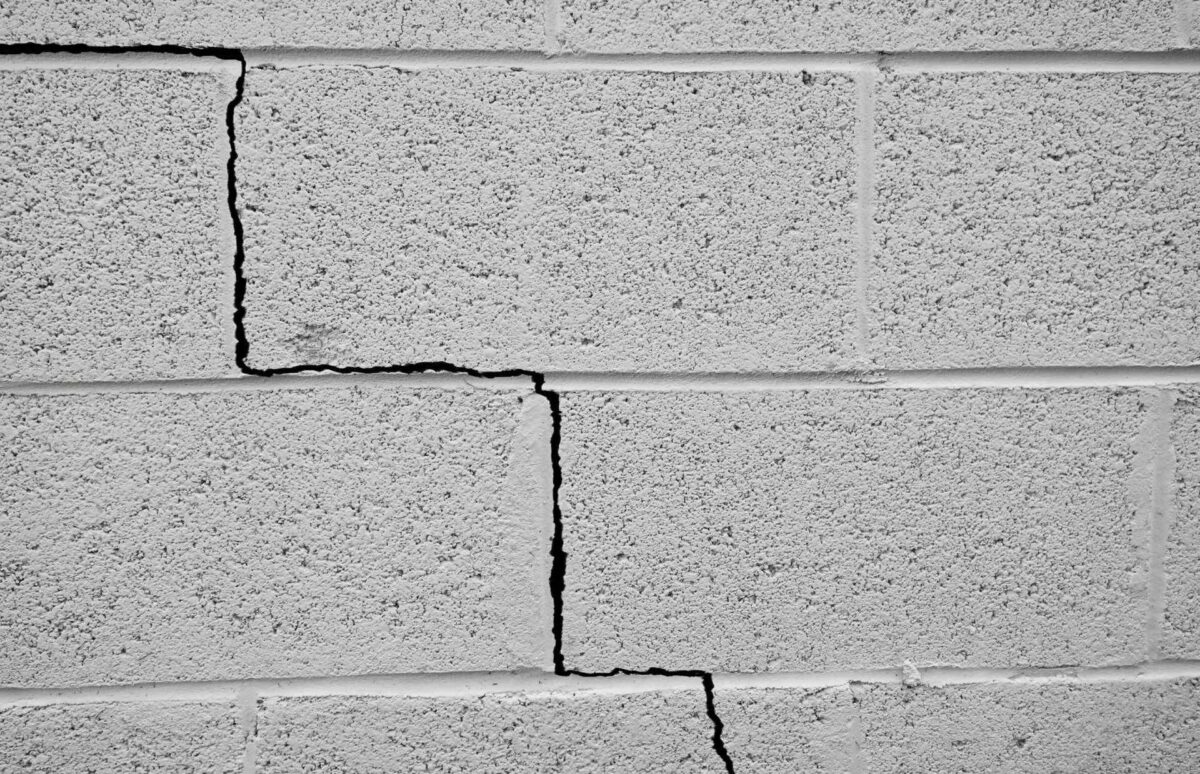
Stair-step cracks are a specific type of diagonal crack that follows a zigzag pattern along mortar joints or block walls. They are commonly seen in masonry or brickwork and can indicate foundation settlement or structural shifting. Stair-step cracks may require professional evaluation and repair to ensure the stability of the structure.
6. Settlement Cracks
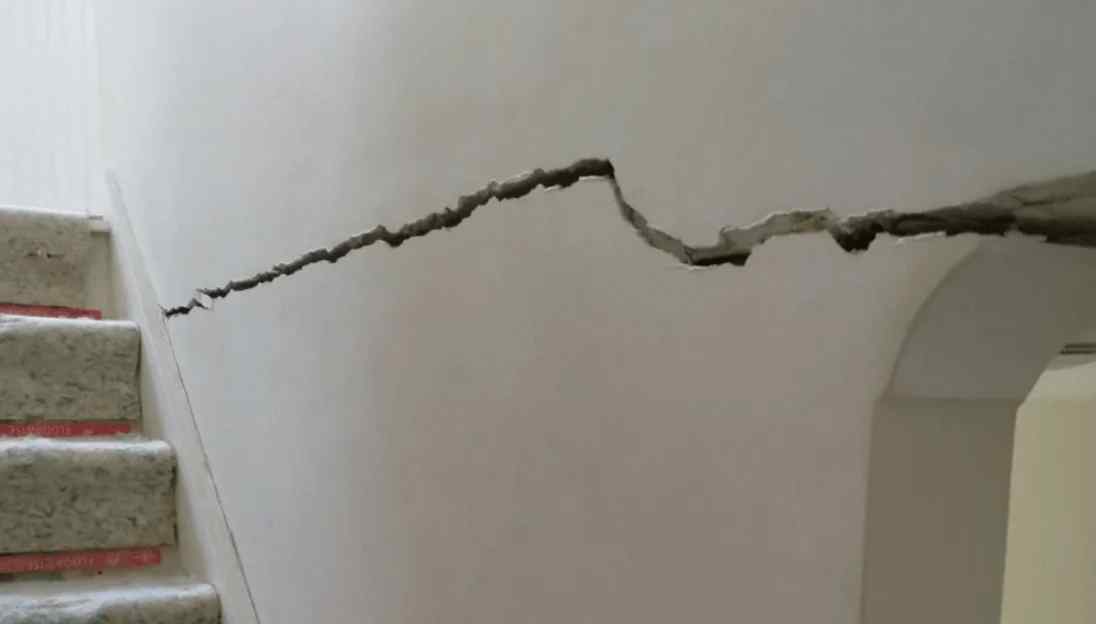
Settlement cracks occur when the building’s foundation settles unevenly, causing the walls to crack as a result. These cracks are typically wider at the top and taper down towards the bottom. Settlement cracks can indicate significant structural issues and should be assessed by a professional.
7. Structural Cracks
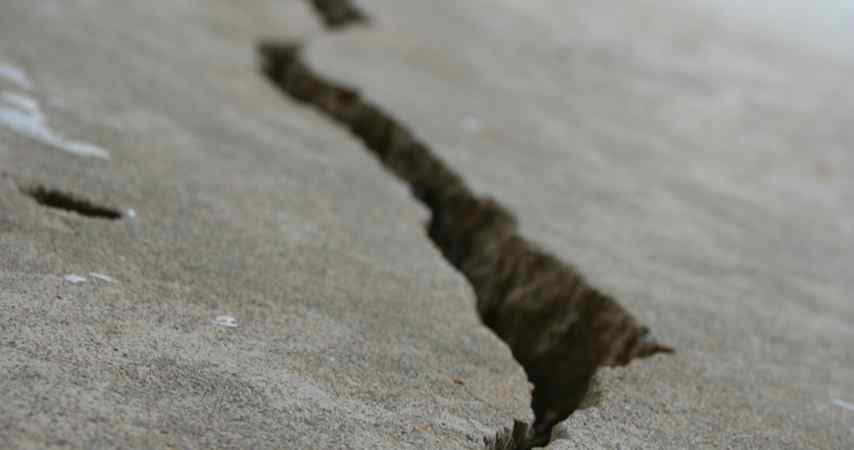
These cracks are more severe and indicate potential structural problems. They can exhibit various patterns, such as multiple intersecting cracks, wide openings, or bulging of materials. Structural cracks require immediate attention from a qualified professional to assess the extent of the damage and determine the appropriate repair methods.
Criterion for Classifying Types of Cracked Wall Surfaces
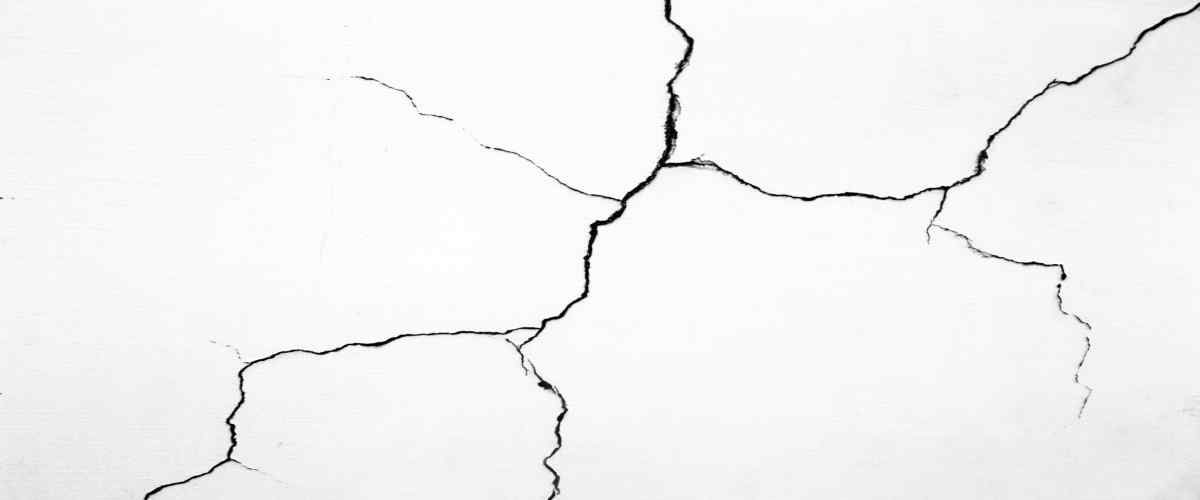
When it comes to classifying a cracked wall, it’s important to distinguish between minor imperfections that are common in most properties and cracks that may indicate underlying structural issues. Here are the criteria for differentiating between the two:
1. Size and Length
Cracks that are small in size, typically less than 1/8 inch wide, and shorter in length, are often considered minor imperfections. These hairline cracks can be caused by the normal settling of the building or the natural expansion and contraction of materials. On the other hand, cracks that are larger in size, wider than 1/8 inch, and longer in length, are more likely to be significant and require further evaluation.
2. Direction and Pattern
The direction and pattern of a crack can also provide insights into its severity. Vertical and diagonal cracks that follow the natural lines of construction materials, such as drywall seams or joint lines, are generally less concerning. These cracks can be attributed to the natural movement of the building due to temperature or humidity changes. However, horizontal cracks, especially those that traverse the entire wall or have a stair-step pattern, may indicate more serious structural issues, such as foundation problems or excessive soil pressure.
3. Structural Impact
Another important factor to consider is the impact of the crack on the overall structure of the wall. Minor imperfections often have no noticeable effect on the stability or integrity of the wall. They are superficial and can be easily repaired for cosmetic purposes. In contrast, cracks that show signs of widening, bulging, or displacement of materials may suggest structural movement or stress, requiring professional assessment.
4. Associated Symptoms
Pay attention to any additional symptoms or warning signs that accompany the cracks. For example, if you notice doors or windows that no longer close properly, uneven floors, or gaps between walls and ceilings, these could be indications of more significant structural issues. Such symptoms, in conjunction with cracks, should be taken seriously and prompt further investigation.
Reasons For Cracked Walls
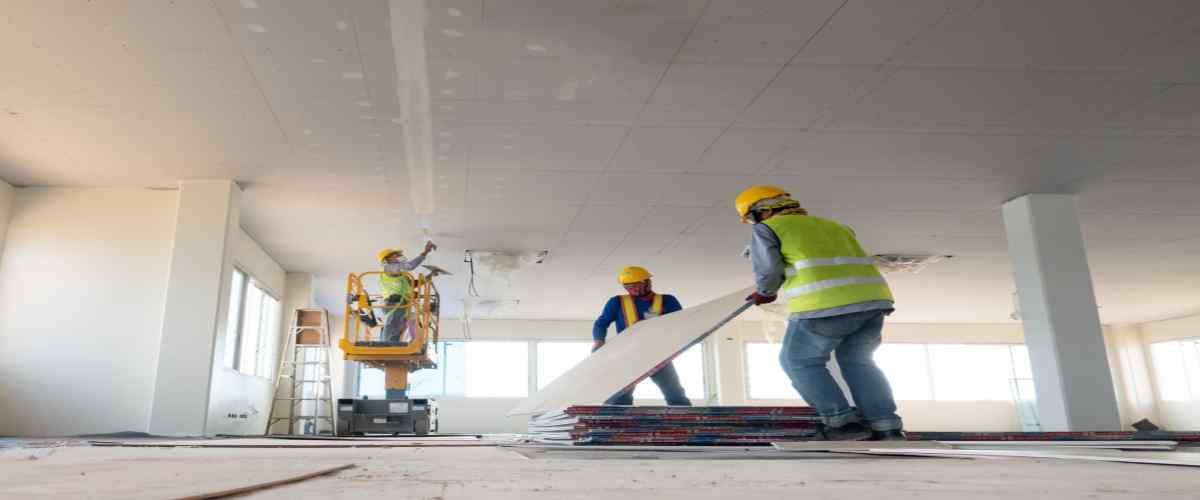
Cracked walls can occur due to a variety of factors, ranging from natural settling of the building to external forces and structural issues. Understanding the common causes of cracked walls can help homeowners and real estate professionals identify potential issues and take appropriate measures. Here are some of the primary causes of cracks in walls:
1. Foundation Settlement
As a building settles over time, the soil beneath its foundation can shift or compress unevenly. This uneven settlement can exert pressure on the walls, leading to cracks. Foundation settlement can be caused by factors such as soil composition, moisture changes, or inadequate soil compaction during construction.
2. Structural Movement
Buildings are subject to structural movement due to factors like temperature fluctuations, humidity changes, or ground movement. These movements can cause materials to expand or contract, leading to cracks in walls. For example, temperature variations can cause the materials to expand during warm weather and contract during cold weather, resulting in cracks.
3. Moisture and Water Damage
Water is a common culprit behind wall cracks. When excess moisture seeps into the walls, it can weaken the materials and lead to cracking. Water damage can be caused by plumbing leaks, roof leaks, poor drainage, or even high humidity levels. Over time, the continuous presence of moisture can deteriorate the integrity of the wall, resulting in cracks.
4. Poor Construction Practices
In some cases, cracks may be a result of poor construction practices or inadequate structural design. Insufficient reinforcement, improper materials, or inadequate load-bearing capacity can contribute to wall cracks. These issues are more likely to occur in older buildings or those constructed without following proper building codes.
5. Natural Disasters and External Forces
Natural disasters such as earthquakes, floods, or strong winds can exert immense pressure on a building’s structure. The excessive force generated by these events can cause walls to crack or even collapse. Additionally, external forces like nearby excavation, heavy construction, ortree roots can also impact the stability of the building and lead to wall cracks.
How to Fix a Crack in Walls?

Fixing cracks in walls depends on the severity and underlying cause of the cracks. While minor cracks can often be repaired using simple DIY wall crack repair methods, more significant or structural cracks may require professional assistance. Here are some approaches to fixing cracks in walls:
- Minor Crack Repair
- For hairline cracks or small surface cracks, use a flexible patching compound or spackling paste to fill the crack. Smooth out the patch with a putty knife and allow it to dry. Sand and paint over the patched area for a seamless finish.
- Apply self-adhesive mesh tape over wider cracks to reinforce the repair. Cover the tape with joint compound, feather the edges, and sand the area for a smooth surface. Finish with paint to match the surrounding wall.
- Structural Crack Repair
- Consult a professional, such as a structural engineer or a qualified contractor, for a thorough assessment of the crack and underlying structural issues.
- Depending on the cause of the crack, the repair may involve addressing foundational problems, reinforcing structural components, or stabilizing the building. This may require techniques such as underpinning, carbon fiber reinforcement, or installing steel braces.
- The repair process may involve excavating around the foundation, injecting epoxy or polyurethane resins to fill voids or stabilize soil, or installing helical piers or concrete pilings for foundation support.
- Prevention and Maintenance:
- To prevent future cracks, address any underlying issues contributing to the cracks, such as addressing drainage problems, fixing plumbing leaks, or controlling moisture levels.
- Regularly inspect the property for signs of new cracks or structural movement. Promptly address any issues to prevent further damage.
- Maintain proper moisture control by ensuring proper ventilation, addressing leaks, and controlling humidity levels.
It’s important to note that while minor crack repairs can be done by homeowners, structural crack repairs should be carried out by qualified professionals with expertise in structural engineering or building construction. Their knowledge and experience are crucial to ensuring the appropriate repair methods are applied, and the structural integrity of the building is restored.
Remember, each crack is unique, and the repair process will vary depending on the specific circumstances. Consulting with professionals will provide the most accurate assessment and tailored solutions for fixing cracks in walls effectively and ensuring the long-term stability of the property.
Repair Cracked Walls with NoBroker Home Services
In conclusion, understanding the different types of cracks in walls is crucial for homeowners, renters, and real estate professionals to assess property conditions and ensure structural integrity. Whether you’re dealing with minor imperfections or more severe structural issues, it’s important to take prompt action to address them or you can end up having wall cracks in a new house.
When it comes to finding reliable solutions for any type of cracked walls, NoBroker Home Services is here to help. Our team of experts understands the complexities of wall cracks and offers comprehensive interior solutions to meet your needs. From minor crack repairs to addressing structural concerns, our professionals have the knowledge and experience to provide effective and tailored solutions.
Don’t let wall cracks go unnoticed or untreated. Contact NoBroker Home Services today to benefit from our expertise and ensure your property remains safe, structurally sound, and visually appealing. With our help, you can bid farewell to wall cracks and enjoy a secure and beautiful living space.

Frequently Asked Questions
Answer: Hairline cracks, typically less than 1/16 inch wide, are common and often not a cause for immediate concern. They are usually superficial and can be caused by natural settling or minor shifts in the building. However, if hairline cracks widen or exhibit other concerning characteristics, it is advisable to consult a professional for further evaluation.
Answer: Yes, minor cracks can often be repaired as a DIY project. Use a flexible patching compound or spackling paste to fill the crack and then smooth it out. For wider cracks, apply self-adhesive mesh tape before covering it with a joint compound. However, if you are unsure or if the cracks are more significant, it’s best to consult a professional to ensure proper repairs.
Answer: Horizontal cracks, especially those that traverse the entire wall or have a stair-step pattern, can be indicators of more serious structural issues. It is crucial to consult a professional, such as a structural engineer, to assess the situation and determine the underlying cause. They will provide the appropriate guidance and recommend the necessary repairs or reinforcements.
Answer: While some causes of wall cracks may be beyond your control, there are preventive measures you can take. Maintain proper moisture control by addressing leaks promptly, ensuring proper ventilation, and controlling humidity levels. Regularly inspect your property for signs of new cracks or structural movement and address any issues promptly. Consulting with professionals for regular maintenance and periodic inspections can also help identify potential issues before they worsen.
Answer: Absolutely, NoBroker Home Services specialises in delivering extensive solutions for various wall crack problems. Whether it’s minor surface cracks or major structural issues, our skilled team is equipped to evaluate these cracks, propose the most suitable repair strategies, and guarantee the enduring stability of your property. Get in touch with NoBroker Home Services for expert advice and customised solutions that cater to your unique requirements.
Answer: In India, the vertical foundation crack repair cost can vary significantly based on the severity and location of the crack, but it typically ranges from ₹10,000 to ₹50,000.
Answer: To repair a vertical crack in a block wall, first clean out the crack, then fill it with a high-quality masonry crack filler or mortar, ensuring it’s thoroughly pressed into the crack for a solid repair.
Answer: Horizontal cracks in concrete block walls often stem from foundation settlement or hydrostatic pressure from soil moisture.









